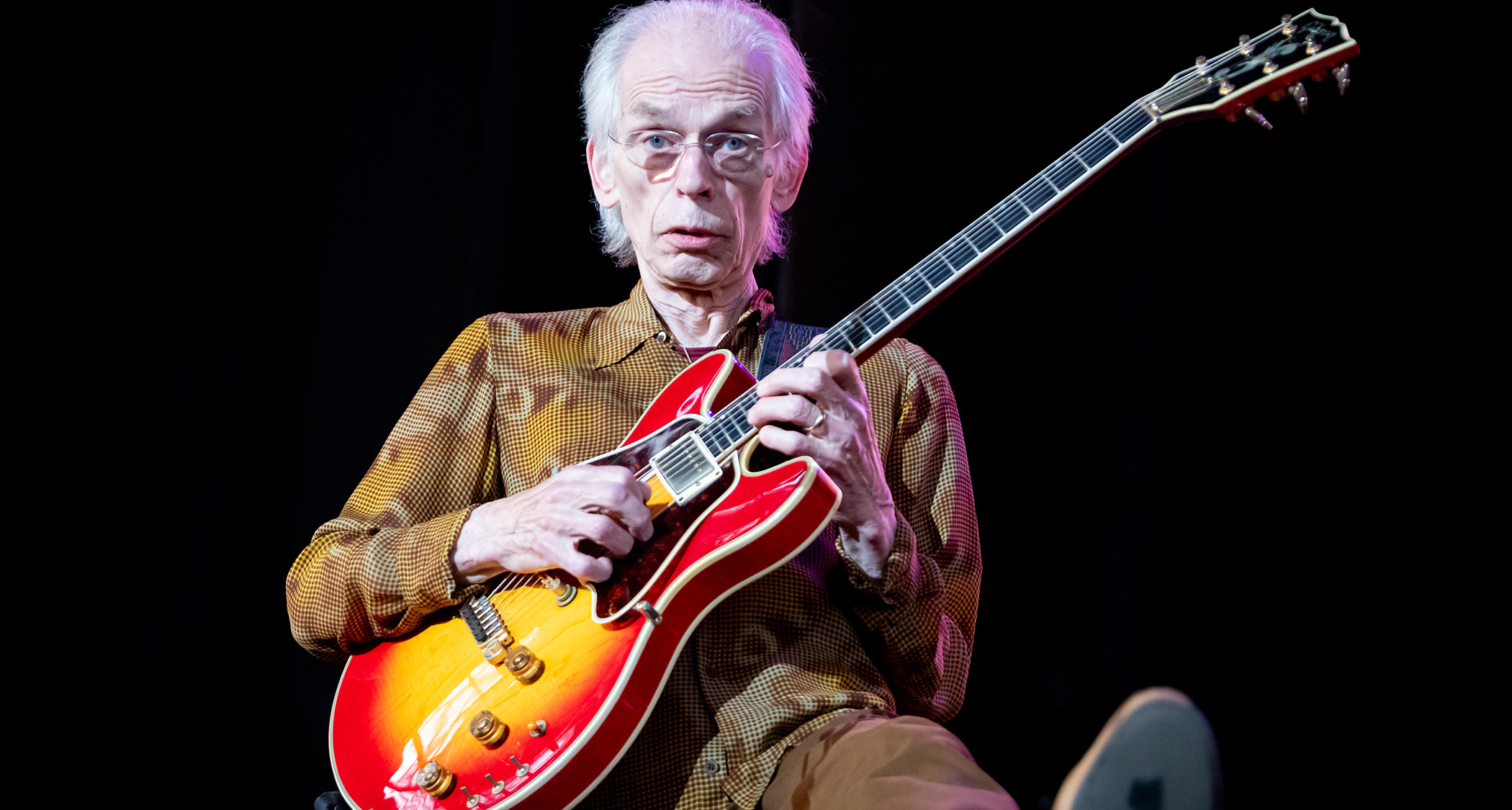
Those of us who think of Steve Howe as one of the great guitar frontiersman of his generation will not be disavowed of this notion upon hearing his new solo album.
Accompanied by his son, Dylan, on drums, Guitarscape is the sound of the Howe drafting an expeditionary force of his favourite electric guitars, a few choice acoustics and the occasional pinch-hitter before setting out into the tundra with a Novatron Summit in tow in search of new sounds and atmospheres.
Each track is self-contained but when you listen to these instrumental arrangements stacked together it is a little like hearing scratch tracks for a movie. The moods and the tones and the feel of each is different, Howe modulating through rock, acoustic, ‘50s twang, psychedelic and classical textures, all of which owes much to the guitars themselves. The Yes guitarist’s previous solo albums follow a similar logic.
“Quantum Guitar and Spectrum are quite similar, too, because it is strictly instrumental, mainly guitar, mainly electric guitars but the fundamental thing that changed is I look for something in different ways,” says Howe. “And one of the ways you go about looking for something different is the way that you go about making your music.”
For a guitar player, that often means switching codes, as Howe does here, drafting chord voicings on the electronic keyboard that he would never have thought of – or, more to the point, would never have been able to reach – on a guitar. His 2019 investment in a Novatron Summit has officially paid off.
“To do a whole load of bed tracks of keyboard playing, some with little bits of melody but mostly just keyboard work, and then working those into the 10 or 12 tracks that I wanted was a whole new way of working,” he says. “It was different for me because I started with keyboards initially, and playing chords and melodies that I wouldn’t have thought of on guitar.
“I have also the added bonus of another texture from the keyboard and another drum pattern to work as a guide to make it varying, varying in tempo, and varying in the musical style.”
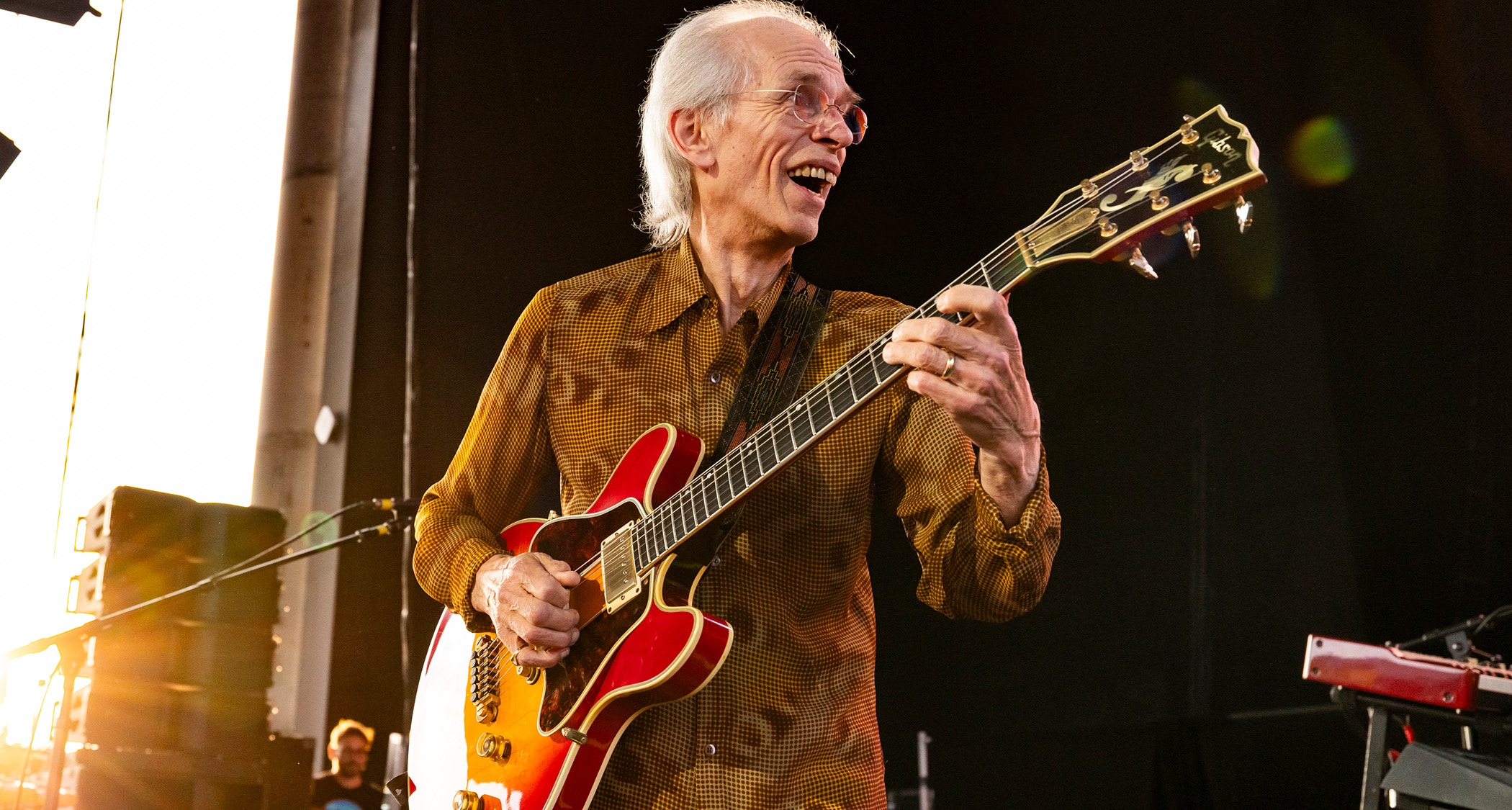
He’s not wrong. Guitarscape contains multitudes, opening with the electro-pop beat of Hail Storm, a saturated drive tone to give his Gibson ES-Artist the uplift to trace melodies atop the mix. Howe then cleans up that ES-Artist tone for Spring Board, fretting triads and single-note lines around the keys.
Howe’s Gibson Chet Atkins CE nylon-string guitar gets turned loose to work the ethereal prog ecstasies of Distillations, the dream-world ambience of Passing Thoughts and the playful Seesaw, while a Gretsch Tennessean, purchased in honour of his guitar hero, Chet Atkins, gives the record its sweetest tones on Secret Mission. As Howe explains here, each track has its own story and he let the guitar tell it.
Looking at your collection, you don’t seem like the sort of player who collects to collect. Your guitars all have a purpose. Was this project an exercise in how each guitar can express a different idea, and have a different musical?
“This album being an instrumental I wanted it to have a balance, and I didn’t know what that was. Because I thought the steel guitar would work more on this album but it didn’t.
“I only have two tracks that I really loved with the steel guitar, so the other ones rested and went away because they got replaced by things I did like, and that meant using, say, an acoustic guitar, a Martin [MC28], on one song, the [Line 6] Variax sitar sound on another track. I like that variation so I am not locked into being an electric guitarist, but then I never have been and that is really the joy of it.”
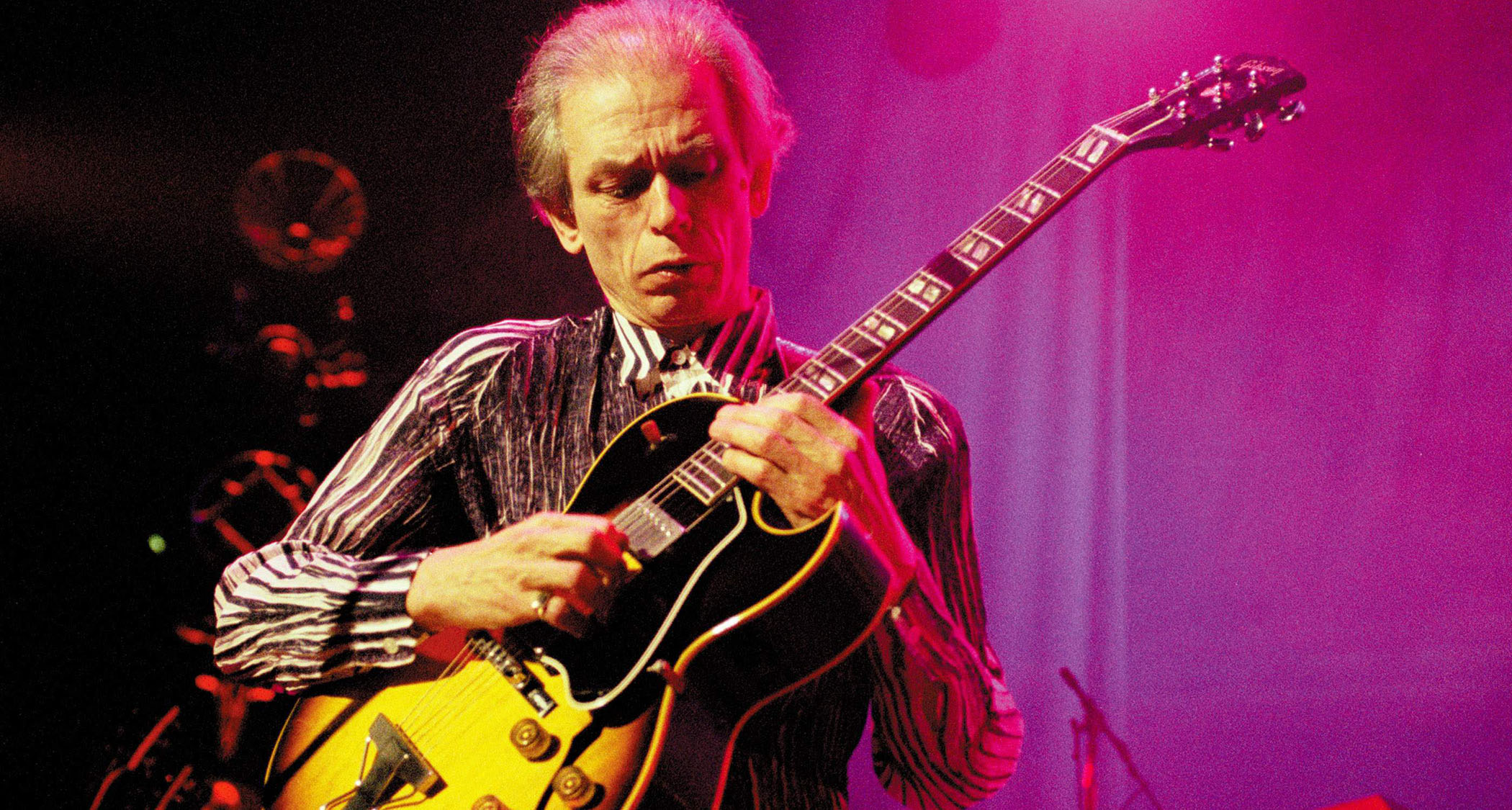
Guitarscape follows in this through line for your career, your musical sensibility, in that you have always been able to find a place for guitar in a mix that can have synth, keys, vocals, all this other musical information, and that can be is a skill in and of itself.
“Well I have had to work with singers a lot and therefore I have learnt – I hope! – how to accompany a singer, and then how to work with a keyboard player, and the bass player and all that, and the drummer.
“The drummer has always been a very central figure through my early years, and Bill [Bruford] was my ultimate drummer in a way – but I have loved working with Alan [White] and the other drummers I’ve worked with. Every instrument has its importance to me.
On Guitarscape, I made a point of not switching guitars in the song. The guitar comes in and it is going to be telling you the main story
“In fact, they all might be equal but they all have to play to each other. I’ve enjoyed that, working with them and gaining knowledge of how to work them into a band, but it’s only increased my sort of palette, what I can do on my own. ‘Oh, yeah, I can pull that off! I can maybe switch here and use a different sound.’”
And each instrument has its chance to be that different sound.
“On Guitarscape, I made a point of not switching guitars in the song. The guitar comes in and it is going to be telling you the main story. And there is a lot of volume pedalling going on, which is a natural phrasing that I can use. I’ve always used a volume pedal. It’s just natural for me.
“I found myself doing that a lot and Upstream is almost playing off that, where the guitar isn’t a ‘Dong!’ but it’s a more ‘Neeee’ – I love that kind of detail, and I can use different electric guitars and feel that they are very, very different.”
“Having that choice on this album was what it was all about. It wasn’t that I wanted to demonstrate it, but I wanted to use them to spin a yarn, spin a tale of guitar impressions, of guitar moods if you like, and different placements. I enjoy finding different things for me to do. [Laughs]”
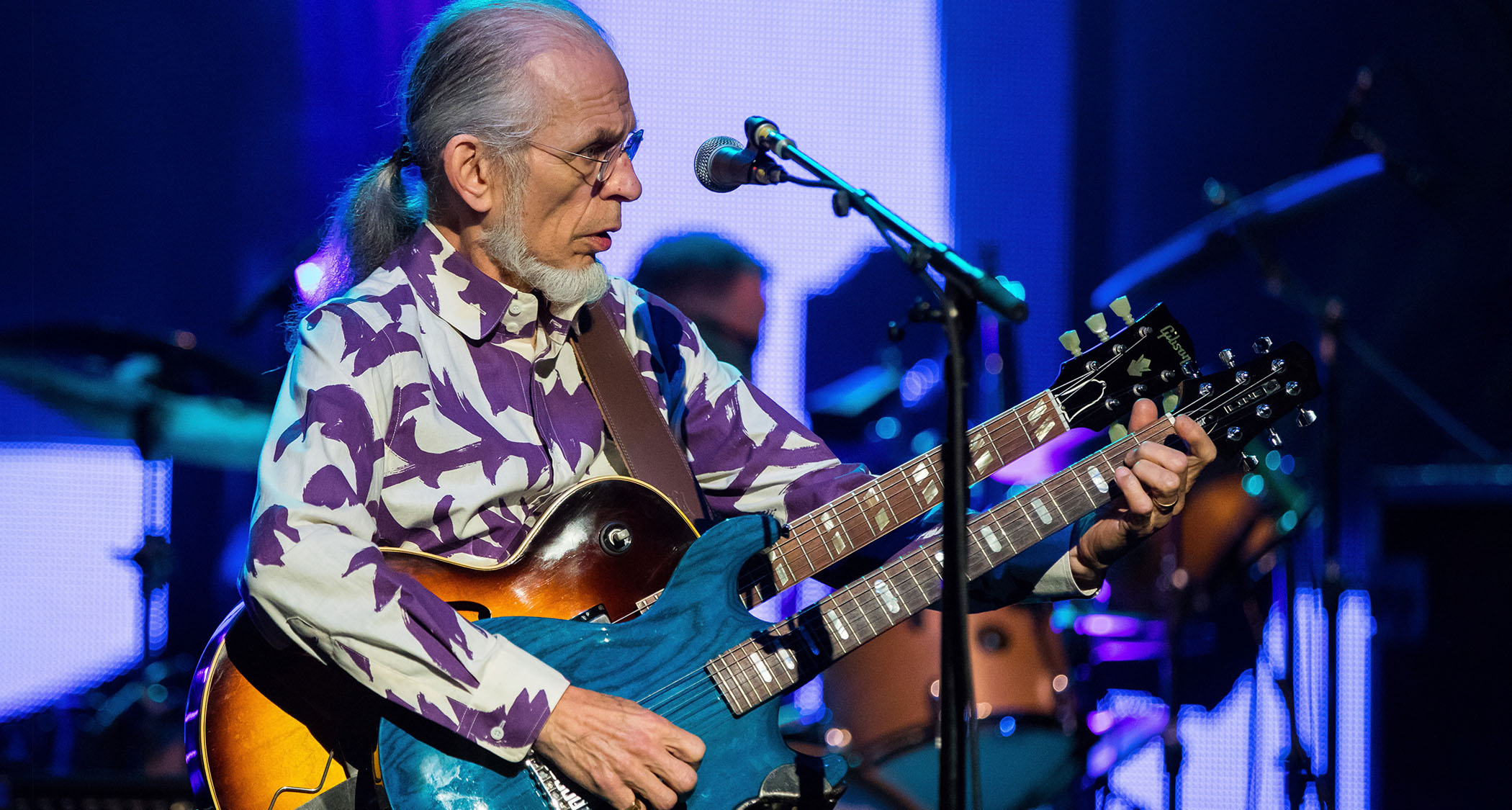
It is a bit like how an artist might approach a canvas with a different medium – charcoal, watercolours, oils – in that each of these guitars has its own voice and feeling. Changing guitars is like changing medium.
“Yeah, they are like different mediums. You’re absolutely right. That’s a good word. I’ve not really associated that with the use of guitar sounds but they are that. They are voices within themselves that you add to or utilise for your own devices.”
You used the Gibson ES-Artist on this record, and that is a fascinating guitar. How do you tend to deploy it?
“I like guitars that are set up to perform, so I got back on this guitar when it was renovated by Tim Stark, originally, and more recently by Simon Thorn. They bring the guitar up to a really high, high standard and it just plays itself! [Laughs] I like the sound. It’s got the active electronics; I don’t really use them.”
“It alters the sound anyway because it has those pickups and that Bob Moog board on it. Basically I use the guitar like any other guitar – it’s just a guitar. But it’s so much fun to play. I like the scale length. I like the accessibility, like I do on the Gibson stereo [guitars]. I like that high accessibility.
“I like everything about it but what happened was, when I got it in 1978, it didn’t do much for a couple of years and then when Asia went onstage I thought it was just the perfect guitar, so I played that most probably every night with with Asia, with Yes, and then again with the Asia reunion. It appeared on The Quest and on Mirror To The Sky and had its moments there, and now it’s featured here because it is the current guitar that is causing a lot of excitement with me.”
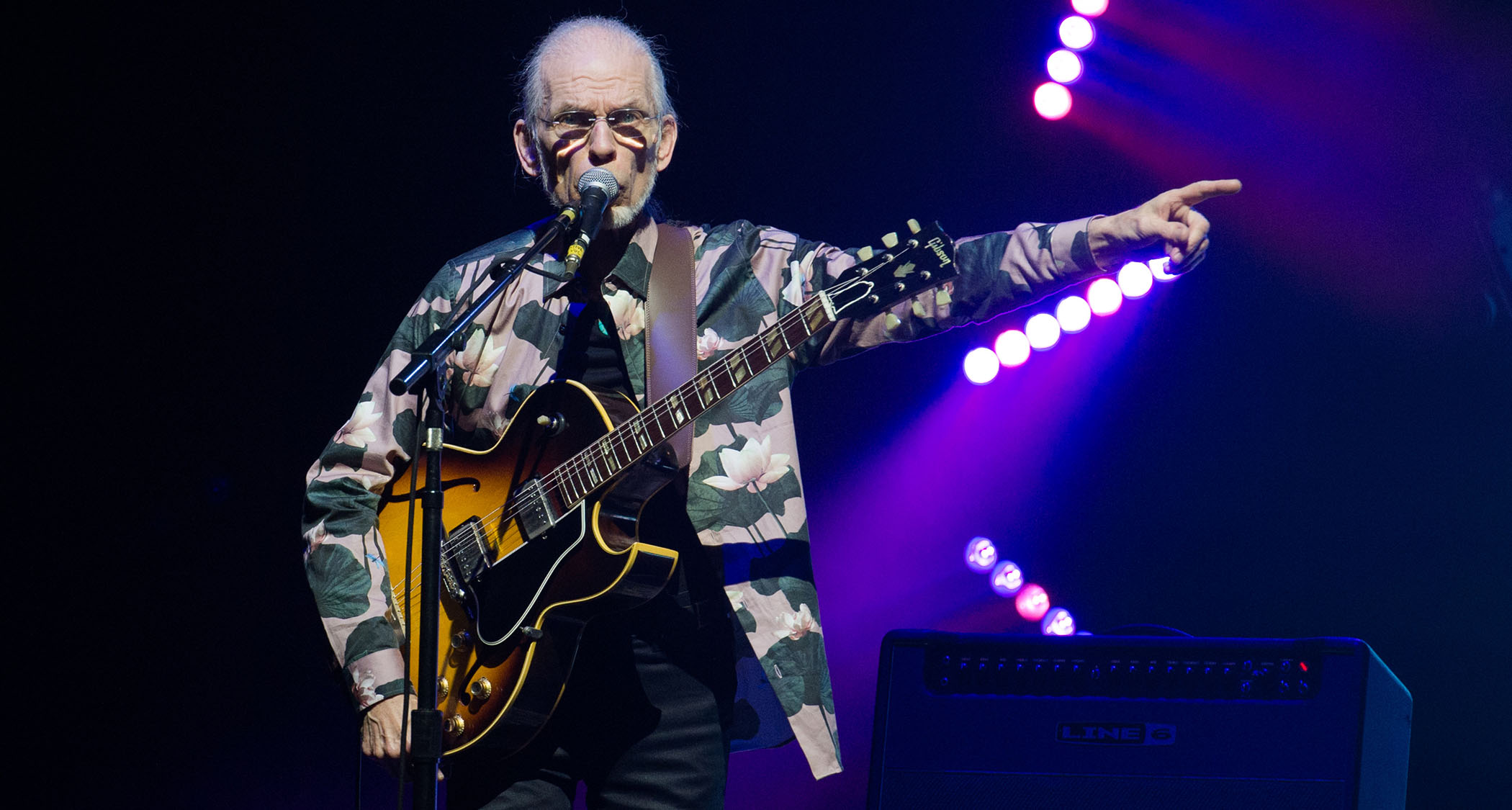
It still seems so ahead of its time. You’ve also been a big proponent of the Line 6 Variax as well, and this feels like an antecedent to that. Do you like the idea of having effects on the guitar itself?
“[Pauses] Yeah, but I was gonna say that the Steinberger [GM4T] was the previous guitar. When I got that in the ‘80s? Jesus! I loved this guitar to bits. And I played it on some of my solo albums, quite a bit, as well as a Fender Strat.
“I’ve always said ‘follow the music’ and part of following the music is the guitar. You find a guitar that is giving you a sense of something fresh and think, ‘I can do something different on this. I think differently! I see differently. I feel differently.’
“It’s fresh horses approach. If you are trying to get across America, you’re going to need some fresh horses, and I think my work on guitars has required fresh guitars, not that the ones I’m playing can ever be improved on. Did [the Steinberger] have one appearance on this album? Yes, when I used the Leslie guitar [sound]. It’s never going away.”
What amplifiers were you using?
“Well, I have this enormous choice. I’ve got an amp set up, a Line 6. Is it called a Tiger or something? It’s some animal or another.”
Mostly I use the Boss GS-10, and that’s a beautiful box. You can travel with it very easily. It’s got great sounds. I found that was a box that a lot of people missed
A Spider?
“It’s a Spider! Anyway, it’s a basic amp, but the nice thing is it has some wacky sounds. You can go all sorts of places. I’ll tell you something about Secret Mission, and this might be why it has a really good presence to it, is that not only is it the [Gretsch] Tennessean but I recorded that through a Line 6 Bogner amp, and that’s a big, heavy amp with two speakers. It’s in my studio because that, with the Tennessean, is a great, great sound. That was actually recorded off the mics.
“But a lot of the other guitars are with a processor, and I use a variety of them; the Helix, older Line 6 pedalboards like the POD XT Live. Mostly I use the Boss GS-10, and that’s a beautiful box. You can travel with it very easily. It’s got great sounds. I found that was a box that a lot of people missed.
“I’ve had the [Zoom] A3, now I’ve got other Roland GP-100s, and things like that, older things, and I also went through the Roland virtual guitars and that appears quite a bit on Quantum Guitar. I’ve got a lot of choices! No one does them all.”
Tell us about Touch The Surface, and that dreamy tone.
“That is the ES-175 and I think it’s one of my Leslie sounds. That is my version of the Leslie. I think I got it from the GS-10, my 175 in a G-S10, adapting the speed and the depth. I find that really nice to play every now and again, to have a Leslie cabinet, because that’s what’s on a lot of the early Yes albums, a real Leslie cabinet.
“That’s a configuration that I wish I had but I don’t because I wasn’t smart enough to buy a Hammond organ years ago and maintain it. But if I did I would have had the guitar adaption where you plug it in.”
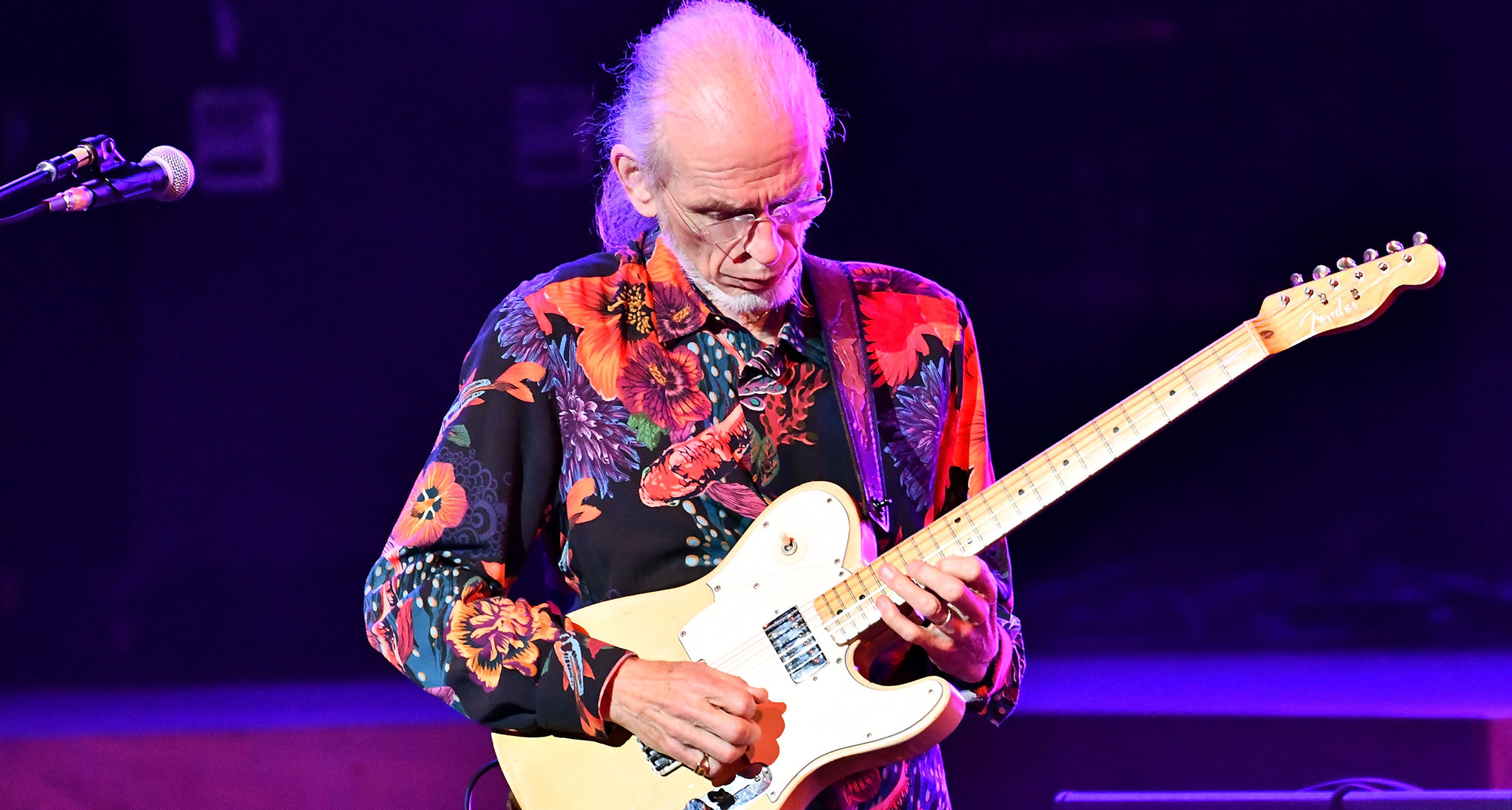
Before we let you go, can you clear up the debate surrounding your 1955 Telecaster – what does the switch on the shoulder do? Because the original pickup selector is still in situ.
“The toggle switch in the 175 position? I put that there because I didn’t like the slide switch. We didn’t remove the physical switch that was originally next to the volume and tone, but it doesn’t do anything, and I had a toggle switch like a Gibson.
“I went kind of Gibson/Fender or Fender/Gibson, making it Gibsonised with the switch where I needed it. And the Gibson pickup to boot! So when I go up on that switch it is just a pure humbucker, and that is the sound that I wanted to contrast the back pickup.
“But in the interim I have had a Fender Broadcaster, which I didn’t change the pickups on. That was absolutely great with the two pickups. Now I have a Fender [American] Ultra Telecaster – a current one, a couple of years old – and that’s got that nice feel about it because it has the five-way switch.”
Some people had suggested it was a standalone phase switch, splitter or something like that.
“Oh but the great thing is, what happened was when it got set up you go to two pickups and they’re out of phase, and that’s where this incredible sound comes from that I use on Gates Of Delirium. I could have had it switched round but I never did.”
- Guitarscape is out now in the UK, 4 October in the US via HoweSound.







